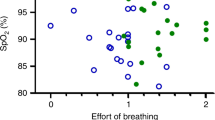Abstract
A RECENT communication by Delius1 calls for some comment. Delius regards displacement behaviour as essentially made up of actions which are related to going to sleep. He therefore interprets displacement behaviour as a homeostatic mechanism in which “de-arousal” actions are called into play to counteract the excessive arousal occasioned by the conflict or thwarting situation to which the animal is exposed.
This is a preview of subscription content, access via your institution
Access options
Subscribe to this journal
Receive 51 print issues and online access
$199.00 per year
only $3.90 per issue
Buy this article
- Purchase on SpringerLink
- Instant access to full article PDF
Prices may be subject to local taxes which are calculated during checkout
Similar content being viewed by others
References
Delius, J. D., Nature, 214, 1259 (1967).
Bolles, R. C., J. Comp. Physiol. Psychol., 53, 306 (1960).
Ewer, R. F., Z. Tierpsychol., 24, 6 (1967).
Tinbergen, N., Quart. Rev. Biol., 27, 1 (1952).
Andrew, R. J., Brit. J. Anim. Behav., 4, 85 (1956).
Sevenster, P., Behaviour, suppl. 9, 1 (1961).
Author information
Authors and Affiliations
Rights and permissions
About this article
Cite this article
EWER, R. Displacement and De-arousal. Nature 216, 686 (1967). https://doi.org/10.1038/216686a0
Received:
Revised:
Issue Date:
DOI: https://doi.org/10.1038/216686a0
This article is cited by
-
Irrelevant behaviour, information processing and arousal homeostasis
Psychologische Forschung (1970)



